FA Back 3.16 - Release notes
Released: October 2022
FA Back 3.16 provides you with an opportunity to analyze your trade order-specific pre-trade limits and automatically save the result. The new version also includes such features as stopping a query at any point and the possibility to have your portfolio follow an interpolated benchmark that changes daily.
Trade order-specific pre-trade limits
Using limits is a way for you to manage risks for client portfolios, your fund portfolios or your asset management portfolios. Pre-trade limits are of great help if you need to evaluate whether your new trade order, considering your portfolio's current positions and all other outstanding trade orders, would breach your investment limits.
For example, a limit can define that you are allowed to have at most 40% in European equities and a maximum of 5% in each equity. A limit can also define that you are allowed to have at most 100.000 USD investments in your portfolio. It is possible to have different limits for different portfolios. You can, for example, have customer portfolios following customer-specific investment limits and then have your fund portfolios following limits from regulations such as UCITS.
This feature is improved in the current release. Previously it was only possible to check the pre-trade limit on the trade order ad-hoc and the result was not saved. Now, the result is saved on the trade order and it’s possible to later check it later. This is helpful if you need to do some compliance checks later on.
Trade order-specific limit runs are available in the Trade order window.
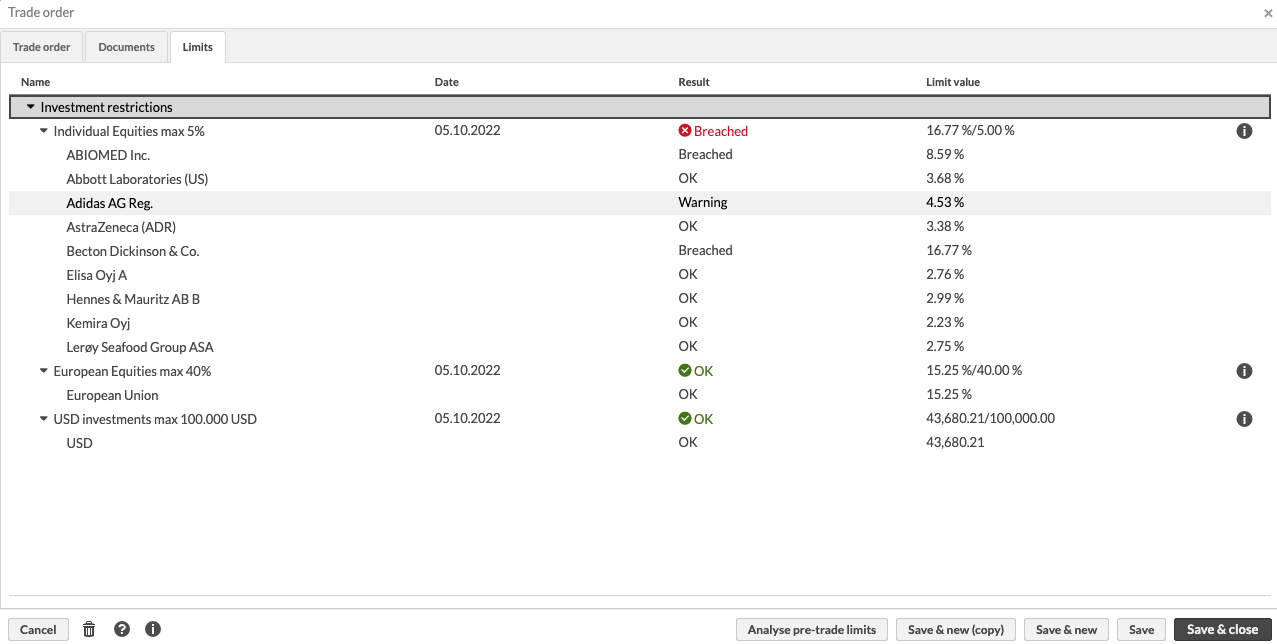 |
Learn more: Limitsin FA Back reference.
Stop running queries
FA Back version 3.16 provides you with the opportunity to stop a query run. This new functionality can be useful if you are by mistake running a query that needs a long time to run. With the Stop button, you can stop the query. This is also useful if you start or run a heavy query and realize that you could modify the query to be smaller and save you time.
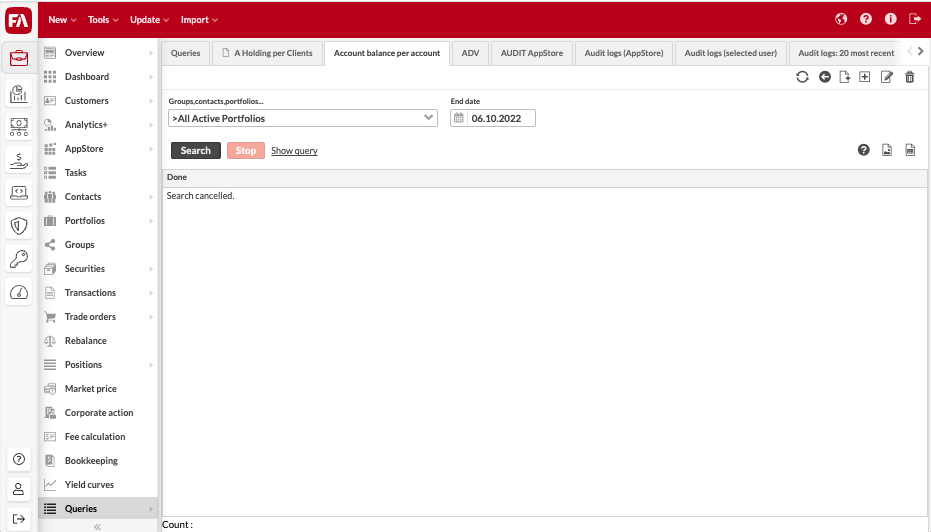 |
Learn more: Queries viewin FA Back reference.
Search marketplace with MIC code
To make it easier to search for the marketplace you need, we have added the possibility to search in the market place field either by the name as today or by the MIC code (Market Identifier Code). The MIC codes are for example XOSL for Oslo Stock Exchange and XNYS for New York Stock exchange. Searching with MIC code will most likely be faster than typing in the stock exchange name.
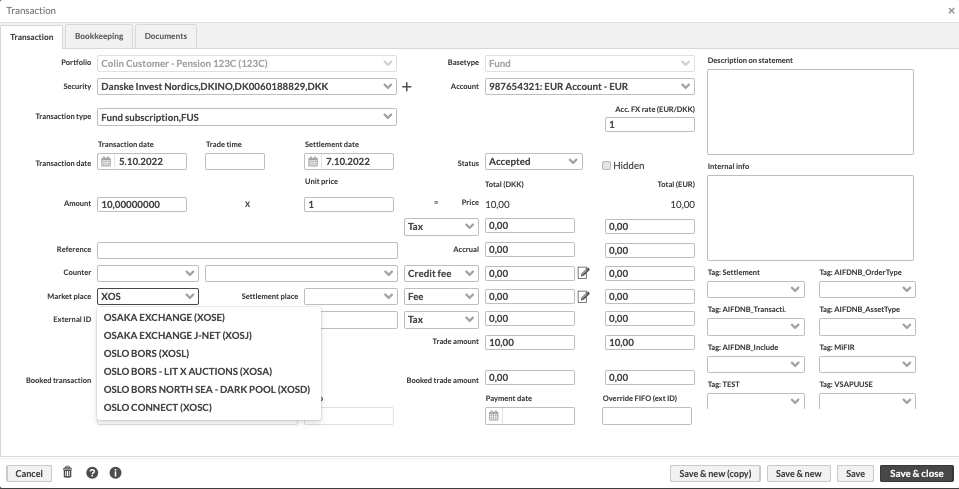 |
Interpolated benchmark and strategy
This new version provides you with new ways to compare your portfolios to benchmarks and to follow strategies by defining constituents that have gradual share changes. In some cases, the investment strategy of your portfolios may change over time: at first, you might have a riskier strategy but after many years you might need to mitigate the risks and gradually change your strategy.
With the interpolated benchmarks, you can compare the performance of your portfolios against benchmarks having daily changes in their constituent weights. With the interpolated strategy, you can ensure that your portfolios are on track with your gradually changing investment strategy.
These analyses provide you with the information to adjust the holdings in your portfolios to outperform the benchmark while following the allocations defined in your investment strategy.
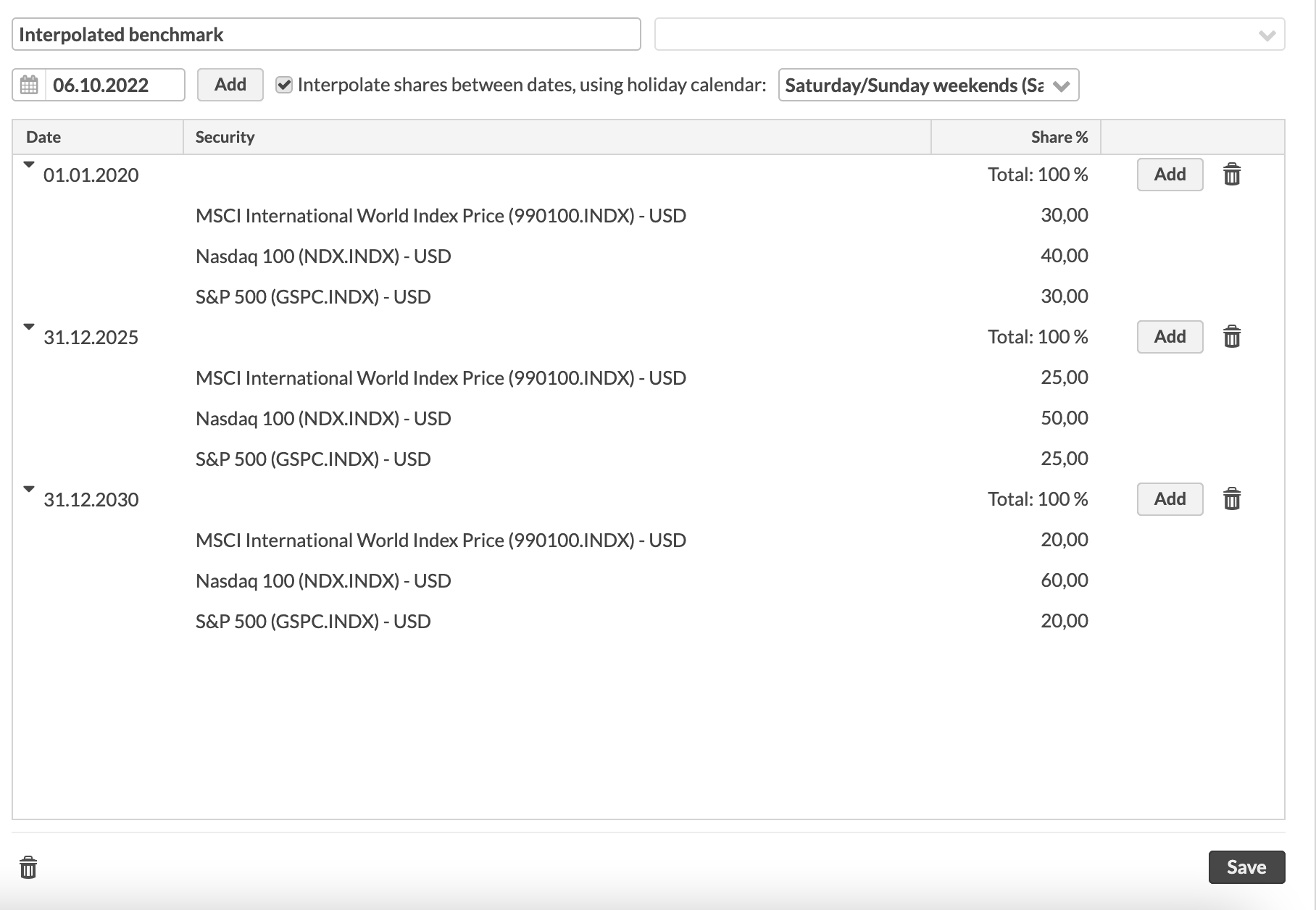 |
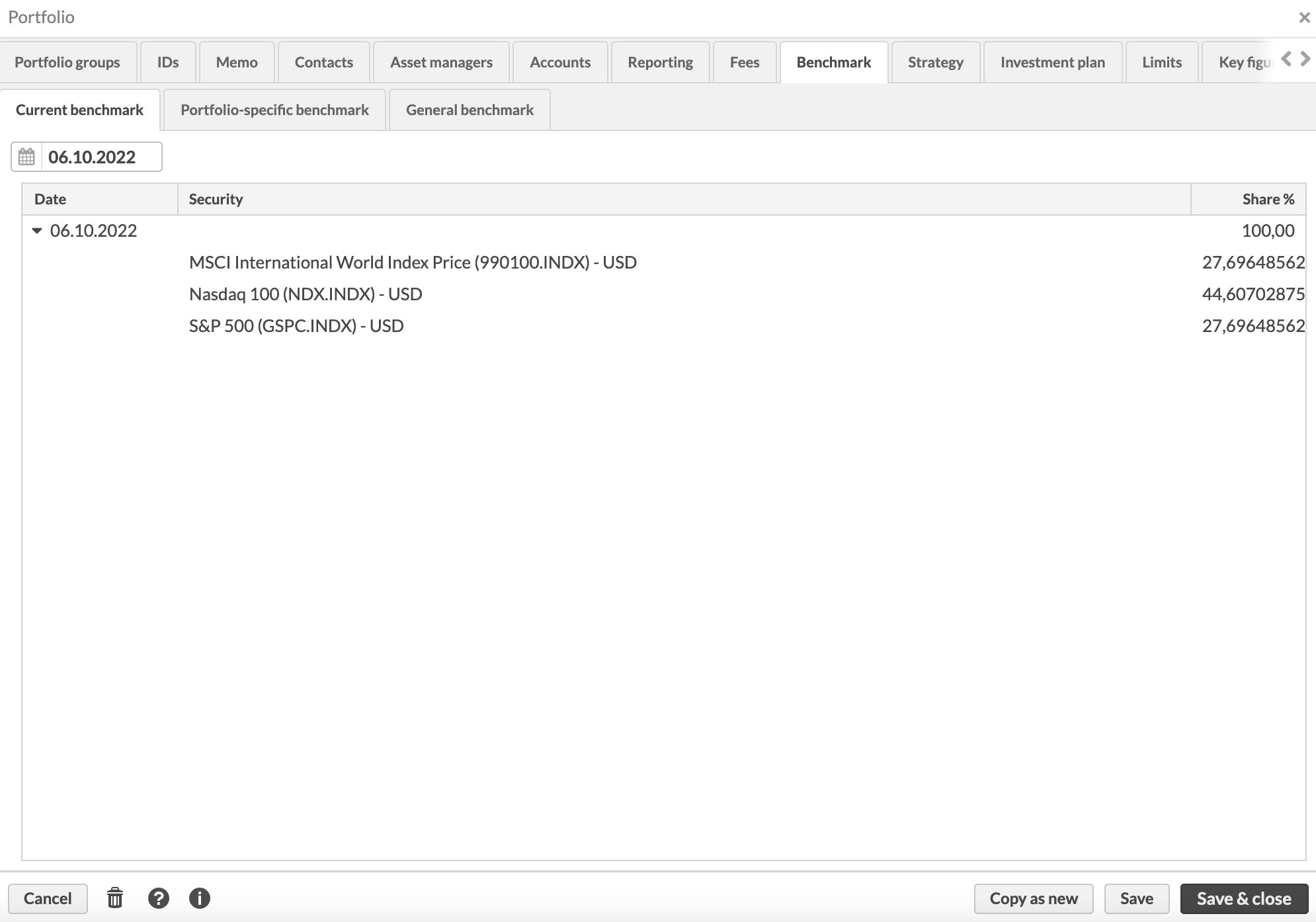 |
To learn more about interpolated benchmarks, see Benchmark indexand Benchmark. To learn more about interpolated strategies and how to link those to your underlying model portfolios, see Asset classes and typesand Strategy.
Defining in account directly, how many decimals the account does track
Now it’s possible to define for cash accounts how many decimals are stored for the transactions on the cash account. This is a very specific functionality that is not often needed. This could be needed in a case where NAV calculation would need more decimals to get the cost transactions correct. Other situations could be that you need to be able to save account transactions with more decimals in order to avoid rounding issues.
Usually, default number decimals is used. It is defined in Preference → Date and decimals formats. The number of decimals for account transactions is set in Account details, and you will see the selected number of decimals in the Transaction window.
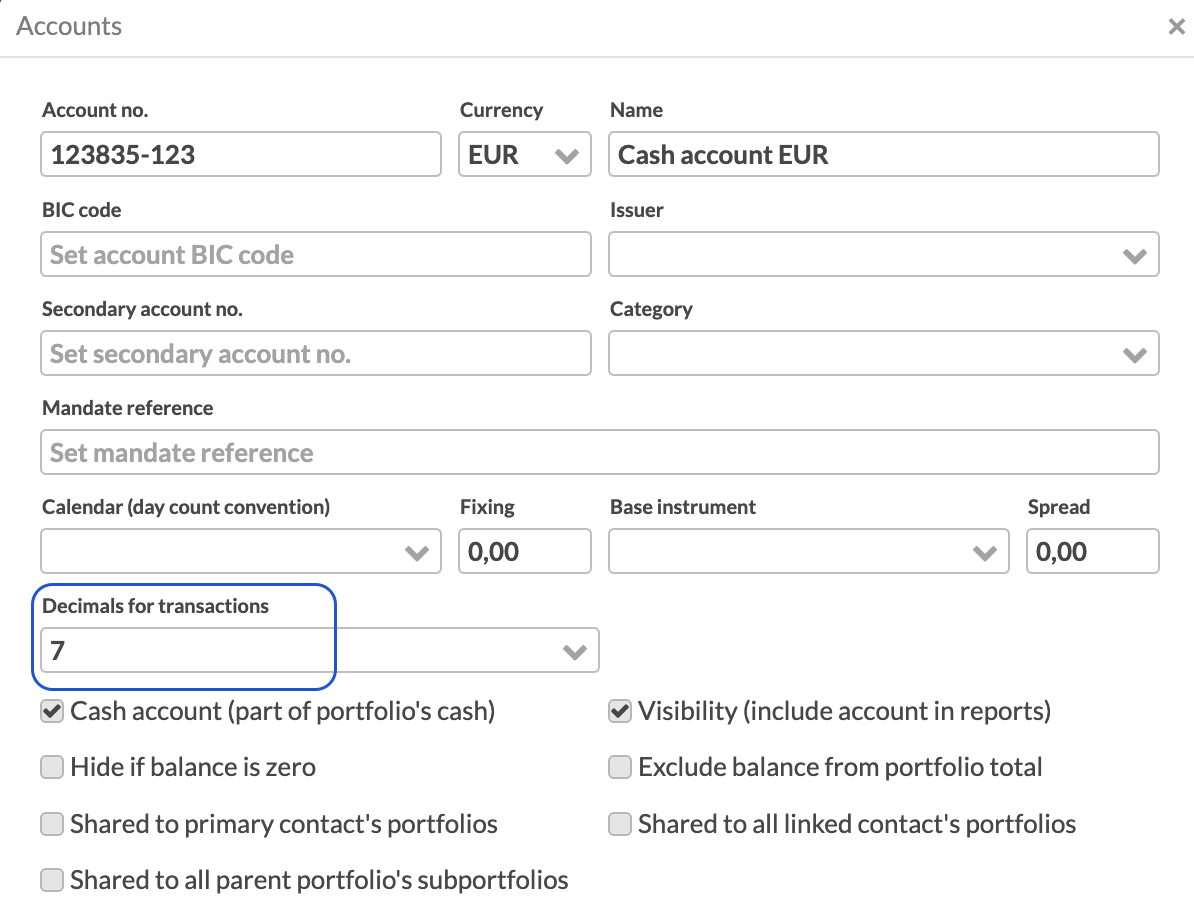 |
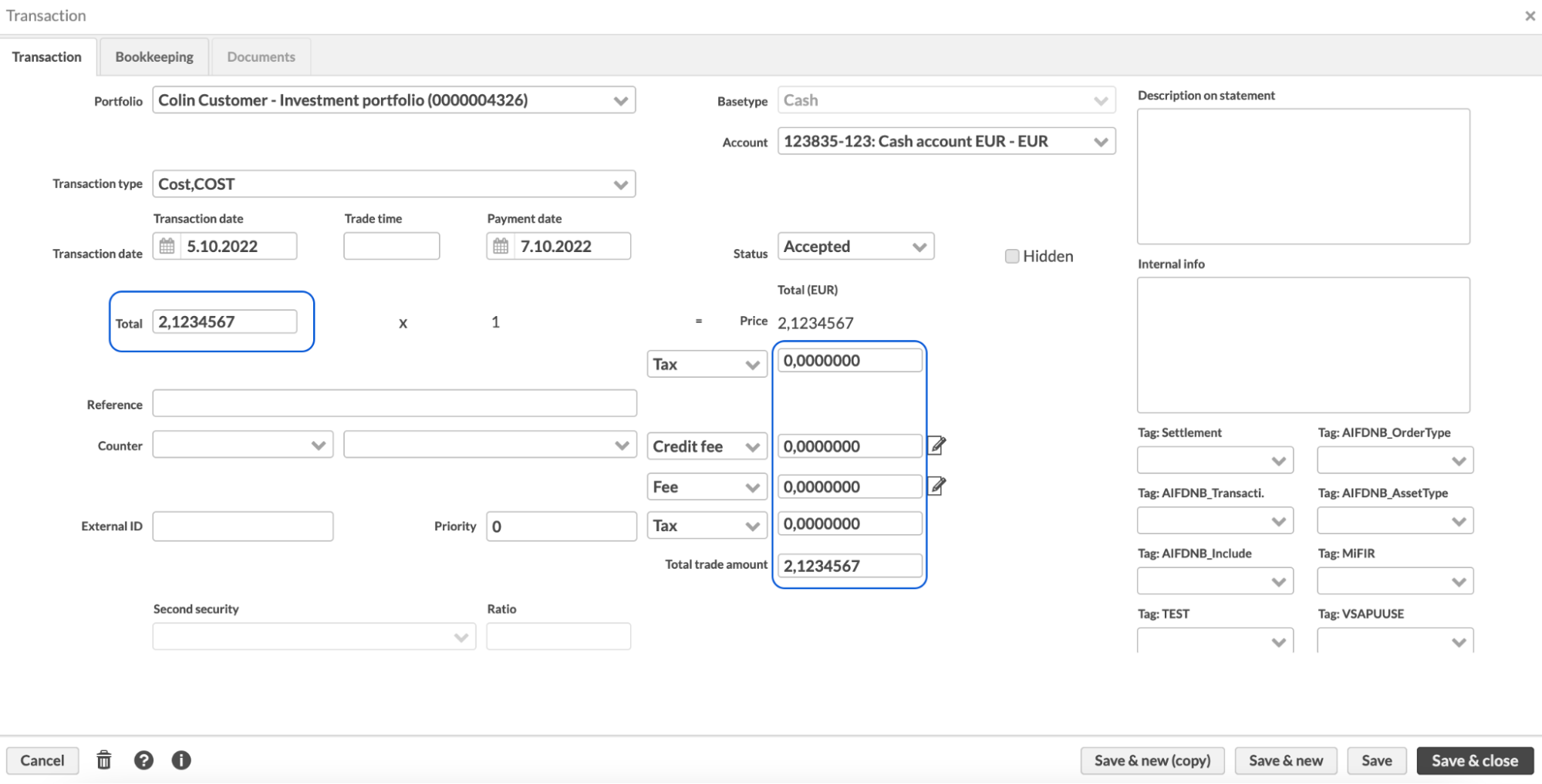 |
Fixes
APIs
A limited visibility user can no longer access data through GraphQL that the user should not have access to.
Portfolio Management
Transactions no longer get mirrored in overviews transaction list, if account number is set to the same as currency code of the account
When saving two times in a row changes to Asset type benchmark, the second modification is now successfully saved.
Task management
Opening a task with the same name as another opened task, do now open the correct task for you.
Other fixes
Some links updated behind i-signs in versions windows related to limits.
Current year to previous month (YM0) dynamic time period selects now the correct time period when used in January.
Using user management roles to limit access to different content, such as screens and Flowable processes, now works as expected.
Updates to FA Back 3.16
FA Back 3.16.1 Release notes
FA Back 3.16.1 is an update to FA Back 3.16. This update includes the following fixes:
Trade order execution calculates transaction’s amount with the correct number of decimals, no longer incorrectly using the new “decimals for transactions” setting on a portfolio's account.
Trade order execution with “Confirm trade orders (Excel)” now uses values stored on the trade order unless you explicitly provide them in the Excel you use for execution. This is applied to all other trade order / transaction fields except Counter, Counter Portfolio, Market place and Settlement place.
You can now configure your Dashboard also when using queries as a base for charts, and the content of the “Label” field is loaded correctly.
Importing cash transactions programmatically through the general importer now correctly generates postings for all imported cash transactions. Before, postings were generated only on the first cash transaction in each portfolio.
When exchanging a bond to another bond, the initial paid accrued interest is now considered correctly in TWR calculation when selling or expiring the new bond.
Aggregate sub-portfolios logic now produces correct TWR calculation on parent portfolio level when a sub-portfolio uses a shared bank account.
TWR (sec) field is now calculated with the correct FX rate, “Market FX rate start”.
FA Back 3.16.2 Release notes
FA Back 3.16.2 is an update to FA Back 3.16. This update includes the following fixes:
Queries with aliases defined for the columns work again normally, allowing you for example to rename the columns in your query result and join columns that have the same name from two different database tables. This issue was introduced in version FA Back 3.16.
FA Back 3.16.3 Release notes
FA Back 3.16.3 is an update to FA Back 3.16. This update includes the following fixes:
The new pre-trade limit analysis on trade orders now works also for cash orders.
Fixed an issue related to dynamic groups sometimes incorrectly containing the same portfolio multiple times. Now the logic that forms the dynamic groups verifies at the end that the group doesn’t contain the same portfolio more than once.
Launching a process with the startProcess API now works correctly also when the user launching the process has a linked contact. This issue was introduced in version FA Back 3.16.
New NoSQL database for storing documents can now automatically store more than 20 GB of documents. The option to store documents in a NoSQL database was introduced with the Q3/2022 version.
In addition, this version ensures that all installed extensions work without problems after an upgrade to Q3/2022 version: extensions with compatibility fixes are automatically updated to the latest version along with the version upgrade if they are installed. The mechanism of running such asynchronous upgrade scripts now also works as intended.
FA Back 3.16.4 Release notes
FA Back 3.16.4 is an update to FA Back 3.16. This update includes the following fixes:
Pre-trade limits are no longer visible twice in the trade order window after you have removed or added a new pre-trade limit to the portfolio.
Pre-trade limits do now work correctly on the main portfolio level when entering a trade order in a sub-portfolio level.
Exclude logic on limits for sub-portfolios is now working correctly.
Queries view do now give feedback on invalid query syntax.
Now it’s possible to store more than 20GB of documents in the document library for new environments.
Support for automatic document library migration when doing version upgrades.
Exposure is now calculated correctly when an option expires with the price of zero.
Calculation logic now correctly handles calculating position values after exchanges. The logic keeps correct track of fractions, even when they are rounded down.
FA Back 3.16.5 Release notes
FA Back 3.16.5 is an update to FA Back 3.16. This update includes the following fix:
This version fixes performance issues induced by changes in 3.16.3 related to dynamic groups sometimes incorrectly containing the same portfolio multiple times. The performance issues were visible on views, with the portfolio selector component.
FA Back 3.16.6 Release notes
FA Back 3.16.6 is an update to FA Back 3.16. This update includes the following fixes:
Changing aggregation of sub-portfolios from “Sum up” to “Recalculate values” or the other way around does now trigger full report calculation in case you use “Save” instead of “Save & Close”.
The Accrued interest is now correctly visible on the Overview on the trade date, when the valuation method is Average.
The Accrual is now correctly visible on the Overview on the trade date, when the valuation method is Average and the portfolio includes several transactions of the same position.
Pre-trade limit statuses and dates are now correctly shown in the Trade order view if a limit is removed and later re-added.
It is now possible to analyze interpolated benchmarks on the portfolio level.
Now it’s possible to do Spin-off corporate actions with one single transaction type. Previously, Spin-offs could only be done with a setup of multiple Exchange transaction types. This version introduces a new Transaction type effect on 'Security 2' - 'Based on another security, transfer return'. This effect allows you to properly transfer the return from the initial position to the new spin-off. The return transfer is based on the previous day's market value of the initial position, adjusted with the share to the new spin-off.
FA Back 3.16.7 Release notes
FA Back 3.16.7 is an update to FA Back 3.16. This update includes the following fixes:
Role restriction tags defined for Model Portfolios, can now correctly be seen from the Model Portfolio window and are not disappearing when saving.
Tags used by a process but not available in preferences, are not disappearing anymore when modifying a transaction.
Dynamic keys for addresses do now work correctly on dynamic PDF report templates.
Fixed a problem where a combined report package with selection to generate the reports “per customer” did generate the JSreports and PDF templates twice. Now they are correctly generated only once.
FA Back 3.16.8 Release notes
FA Back 3.16.8 is an update to FA Back 3.16. This update includes the following fixes:
Searching for documents through the Administration view with partial document name works correctly. You can search with exact text (case sensitive) and from beginning, middle or end of the file name, using either * or %. This issue was introduced in version FA Back 3.16.
FA Back 3.16.9 Release notes
FA Back 3.16.9 is an update to FA Back 3.16. This update includes the following fixes:
The logged in user is now automatically added as the creator and modifier of certain fund management -related documents. Also, when moving or renaming files, the modifier and modification date are now updated correctly. This issue was introduced in version FA Back 3.16.
Limited visibility and extended limited visibility users now have slightly more flexibility in terms of the GraphQL API calls they can make. Specifically, they can now request a portfolio’s or transaction’s primary contact, as long as the user has access to that information. This issue was introduced in version FA Back 3.16.